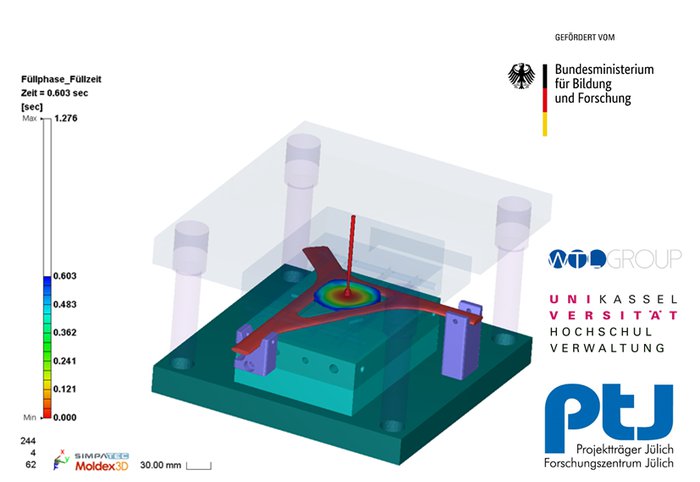
TightHybrid - Media-tight plastic-metal hybrid composites
ESPECIALLY FOR OUR USERS
How can injection-molded plastic-metal hybrid composites be produced that are permanently media-tight under mechanical and thermal load? In the TightHybrid research project, SimpaTec and other project partners are addressing this question.
Hybrid components made of plastic and metal components and which are used in applications with thermal alternating stress and media exposure, often require additional intermediate steps in assembly for screwing and inserting the seal. Due to a lack of knowledge about the composite properties and interpretation of coupled process/structure simulations of hybrid composites with regard to adhesion concepts, hybrid components have not yet become established in the series production of thermo-mechanically stressed components with media exposure.
The research project "TightHybrid - Media Density of Plastic-Metal Hybrid Composites" was therefore commissioned by the German Federal Ministry of Education and Research (BMBF) and Project Management Jülich for the simulation-based development of injection-molded plastic-metal hybrid composites with a media density that is durable under mechanical and thermal load. In addition to SimpaTec, the University of Kassel and WTL Formenbau GmbH are involved as joint partners in the project, which is part of the BMBF's materials platform "Hybrid Materials - New Possibilities, New Market Potentials" (HyMat).
During the past project year, SimpaTec's research activities consisted primarily of preparing the material data characterized by the University of Kassel for developed material formulations and generating model parameters for suitable viscosity and pvT models. Subsequently, material maps for the injection molding and structural simulations can be generated from the prepared data. In addition, preparations such as the model setup of the already existing demonstrator molds for the process simulation in Moldex3D and the structure simulation in MSC Marc.Mentat were carried out as well as a research on possible contact conditions to describe the interfacial behavior between plastic and metal. Initial concept studies were carried out to verify the selected failure criterion.
The commissioning of the coupled simulation chain is currently underway. As soon as the required experimental material data and test results are completely available, validations will be carried out by comparing the simulative and experimental results. If necessary, possible optimization measures will be derived and implemented. To investigate influencing factors, DOE (Design of Experiment) analyses are simulatively performed and evaluated to gain additional insights into the robustness of the process and process optimizations.
